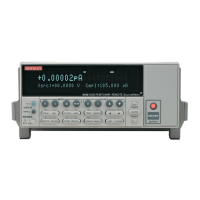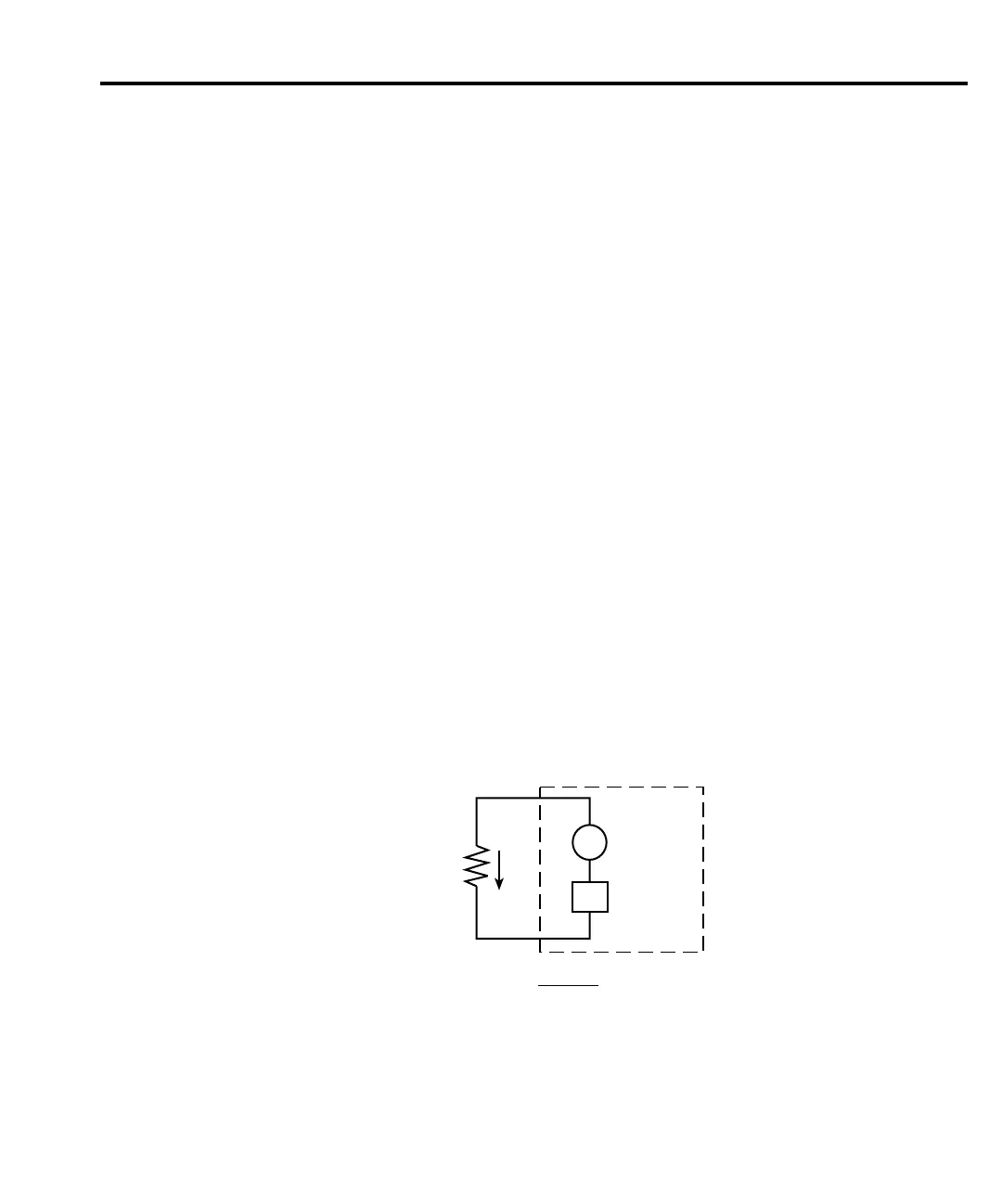Measurement Considerations F-9
To minimize the effects of dielectric absorption on current measurements, avoid applying
voltages greater than a few volts to insulators being used for sensitive current measurements. In
cases where this practice is unavoidable, it may take minutes or even hours in some cases for
the current caused by dielectric absorption to dissipate.
Voltage burden
The input resistance of the ammeter causes a small voltage drop across the input terminals.
This voltage is known as the voltage burden. If the voltage burden is large in relation to the
voltage of the measured circuit, then significant measurement errors will occur.
Refer to Figure F-3 to see how voltage burden affects current measurements. Assume V
S
is
set to output 5mV and R
L
is 5kΩ. An ideal ammeter with zero voltage burden would measure
the current source as follows:
I
M
= V
S
/R
S
= 5mV/5kΩ
= 1
In practice however, every ammeter has a voltage burden. If the voltage burden (V
B
) is lmV,
the current will be measured as follows:
I
M
= (V
S
+
V
B
)
/ R
S
= (5mV + 1mV) / 5kΩ
= 1.2
The lmV voltage burden caused a 20% measurement error. The voltage burden of Model
6430 is <1mV.
R
L
I
L
= <1mV
6430
I
M
V
S
V
B
I
M
=
V
S
–
V
B
R
L
Figure F-3
Voltage burden

